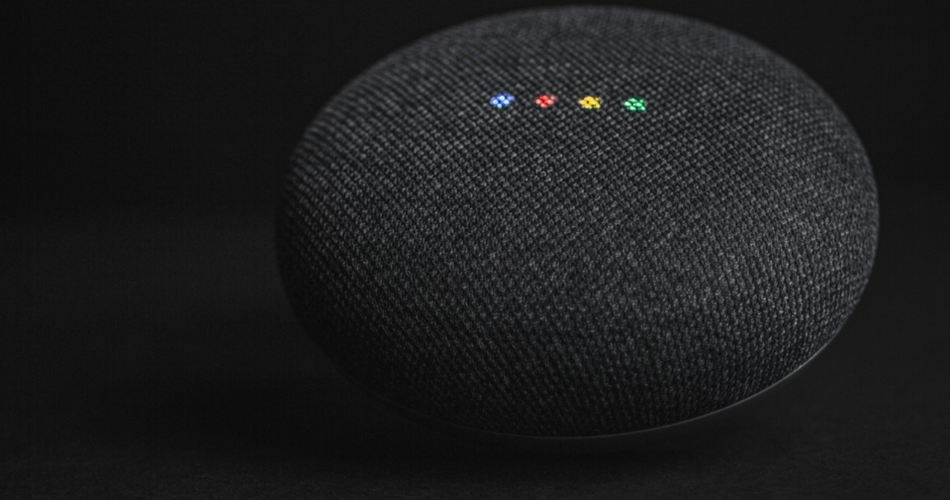AI-powered voice assistants | In world where time is money, businesses are constantly seeking new ways to provide personalized customer service that saves time & enhances the user experience. The answer? AI-powered voice assistants.
With their ability to understand natural language & learn from human interactions, these virtual assistants are revolutionizing the way we interact with technology. In this blog post, we’ll explore what AI-powered voice assistants are, how they work, their benefits & different types available in the market today. We’ll also share tips on how to use them effectively for your business needs. So sit back, relax & discover why AI-powered voice assistants are the future of customer service!
Table of Contents
What is AI-Powered Voice Assistants?
AI-powered voice assistants are virtual assistants that use artificial intelligence to understand natural language & perform tasks based on user requests. They can be found in variety of devices, such as smartphones, smart speakers & even cars.
These voice assistants have the ability to recognize voices, learn from past interactions & provide personalized responses based on individual preferences. They can help users with daily tasks like setting reminders, sending messages or making calls hands-free.
One of the benefits of AI-powered voice assistants is their convenience factor – you can simply ask them question or give them command without having to type anything out. This speeds up processes & saves time for busy individuals.
Another major benefit is their accessibility – people with disabilities or impairments may find it easier to interact with technology through voice commands rather than traditional user interfaces.
AI-powered voice assistants are an innovative technology that offer many benefits for both personal & business use cases. With continued improvements in machine learning algorithms, we can expect these virtual helpers to become even more advanced in the future!
What are the benefits of using AI-Powered Voice Assistants?
AI-Powered Voice Assistants are becoming increasingly popular for reason: they offer numerous benefits to both customers & businesses. For customers, the most obvious benefit is convenience. Rather than typing out or searching for information on their own, users can simply ask their voice assistant to perform tasks such as checking the weather, setting reminders or even making purchases.
Another advantage of AI-powered voice assistants is personalization. As users continue to interact with their assistant over time, it learns more about them & can tailor its responses accordingly. This creates personalized experience that makes users feel valued & understood.
For businesses, AI-powered voice assistants provide an opportunity to enhance customer engagement in ways that were previously impossible. By integrating these technologies into existing systems, companies can streamline processes such as order taking or customer support while also providing greater insights into consumer behavior.
Moreover, voice assistants enable businesses to reach new audiences by catering to those who find traditional interfaces difficult or inconvenient – such as visually impaired individuals – thus opening up new markets for products & services.
By leveraging the power of artificial intelligence with voice technology , companies have everything they need at hand in one powerful toolset- offering convenience paired with personalization which leads towards enhanced engagement creating better experiences for clients whilst achieving business growth objectives at lower costs than ever before!
How do voice assistants work?
Voice assistants work by using combination of natural language processing (NLP) & artificial intelligence (AI) technologies. When user speaks to the voice assistant, the audio input is first converted into text through automated speech recognition (ASR). NLP algorithms then analyze this text to understand the user’s request.
Once the voice assistant has processed the user’s request, it uses AI algorithms to provide an appropriate response. These responses can range from simple tasks like setting reminders or playing music to more complex operations like booking flights or making restaurant reservations.
Underlying these AI-powered systems are large amounts of data collected over time that enable them to learn & improve their performance continually. Machine learning algorithms allow voice assistants to adapt & become better at understanding users’ requests as they interact with them more frequently.
In addition, some voice assistants offer customization options that allow users to personalize their experience further. For example, users can set up custom routines or preferences for certain types of queries that they use regularly.
The technology behind voice assistants continues to evolve rapidly as developers strive towards creating more advanced & intuitive experiences for users in different industries such as customer service or health care.
The different types of AI-Powered Voice Assistants
There are different types of AI-powered voice assistants, each designed for specific purposes. The most common ones are virtual assistants like Siri, Alexa & Google Assistant. These voice assistants can help with daily tasks such as setting reminders or playing music.
Smart home devices like Nest or Ecobee use voice assistants to control the temperature, lights & other features in your home. They can be integrated with other smart gadgets to create seamless experience.
In-car assistant technology is also becoming increasingly popular. Manufacturers like BMW, Mercedes-Benz & Audi have developed their own AI-powered voice assistants that allow drivers to perform hands-free functions while driving. Businesses are now using chatbots as part of their customer service strategy. These bots offer 24/7 support, handle queries efficiently & provide personalized recommendations based on user data.
Voice search is another type of AI-powered assistant that’s gaining traction among marketers. It allows users to verbally search for information instead of typing it into search engine, making it an effective tool for SEO optimization.
The different types of AI-powered voice assistants cater to various needs across industries & lifestyles. As technology continues to evolve rapidly, we can expect more innovations in this field in the near future.
How to use AI-Powered Voice Assistants
Using AI-powered voice assistants is becoming increasingly popular as technology advances. With these devices, you can easily control various aspects of your life without having to use your hands or even look at screen.
To start using an AI-powered voice assistant, you’ll need to first purchase the device that best fits your needs & budget. There are several options available on the market such as Amazon’s Alexa, Apple’s Siri or Google Assistant.
Once you have the device in hand, make sure it is properly set up & connected to your home WiFi network. Follow any instructions provided by the manufacturer for initial setup & customizations. Next, learn about different commands that can be used with your specific voice assistant. These devices offer varying levels of functionality so understanding what can be done with each one will help maximize their usefulness. Get comfortable using natural language when interacting with the device. Speak clearly & concisely while avoiding long sentences or complex vocabulary. The more familiar you become with using AI-powered voice assistants, the easier they will be to integrate into your daily routine! Related articles here.
Incorporating an AI-powered voice assistant into your everyday life takes some getting used to but once mastered it offers world of convenience!
5 Tips For AI-Powered Voice Assistants
Now that we know the benefits of AI-powered voice assistants & how they work, let’s discuss some tips for making the most out of them.
1. Customize your settings: Most voice assistants allow users to customize their settings according to personal preferences. Make sure you take advantage of this feature by adjusting the language, accent & other relevant factors.
2. Speak clearly: While AI-powered voice assistants are highly advanced, they might still have trouble understanding certain accents or dialects. Therefore, it is important to speak clearly when giving commands or asking questions.
3. Use specific phrases: Instead of using generic statements like “what’s the weather like today?”, Consider using more precise language, such as “will it rain today?” This will enable your assistant to grasp the information more accurately you’re seeking and respond to you.
4. Stay up-to-date with new features: As technology evolves at rapid pace, so do these virtual assistants. Keep yourself informed about any updates or new features that may enhance your experience with them.
5. Protect your privacy: Since these devices are always listening in order to respond quickly to commands, make sure you adjust your privacy settings accordingly in order protect sensitive information from being shared unintentionally.
By following these simple tips, you can maximize the benefits of AI-powered voice assistants while minimizing potential issues or complications in usage.
Conclusion
AI-powered voice assistants have become an essential tool for businesses to provide personalized customer service. The advancement of technology has enabled these assistants to be more natural & intuitive in their interactions with customers. They can understand the context of conversation better & provide relevant recommendations or solutions.
The benefits of using AI-powered voice assistants are numerous, from cost savings to improved efficiency, increased customer satisfaction & loyalty. By adopting this technology early on, businesses can stay ahead of the curve & gain competitive advantage in their respective industries. As we move towards world where voice is the primary mode of communication, it’s crucial that businesses incorporate AI-powered voice assistants into their customer service strategy. With these tools at their disposal, they can deliver exceptional experiences for their customers while achieving business goals simultaneously.
It’s no longer question of whether or not businesses should invest in AI-powered voice assistants; it’s now about how soon they adopt them into their operations. As always, those who act fast will reap the most significant rewards.




